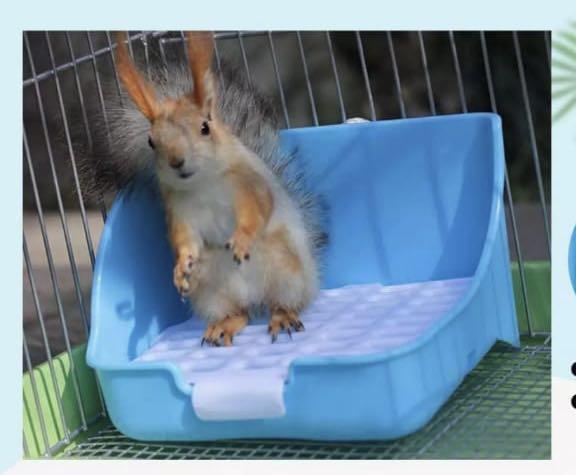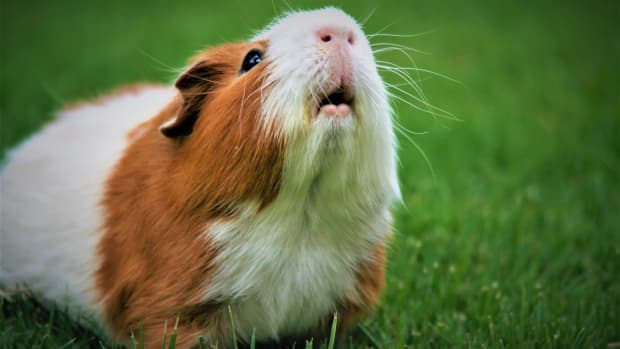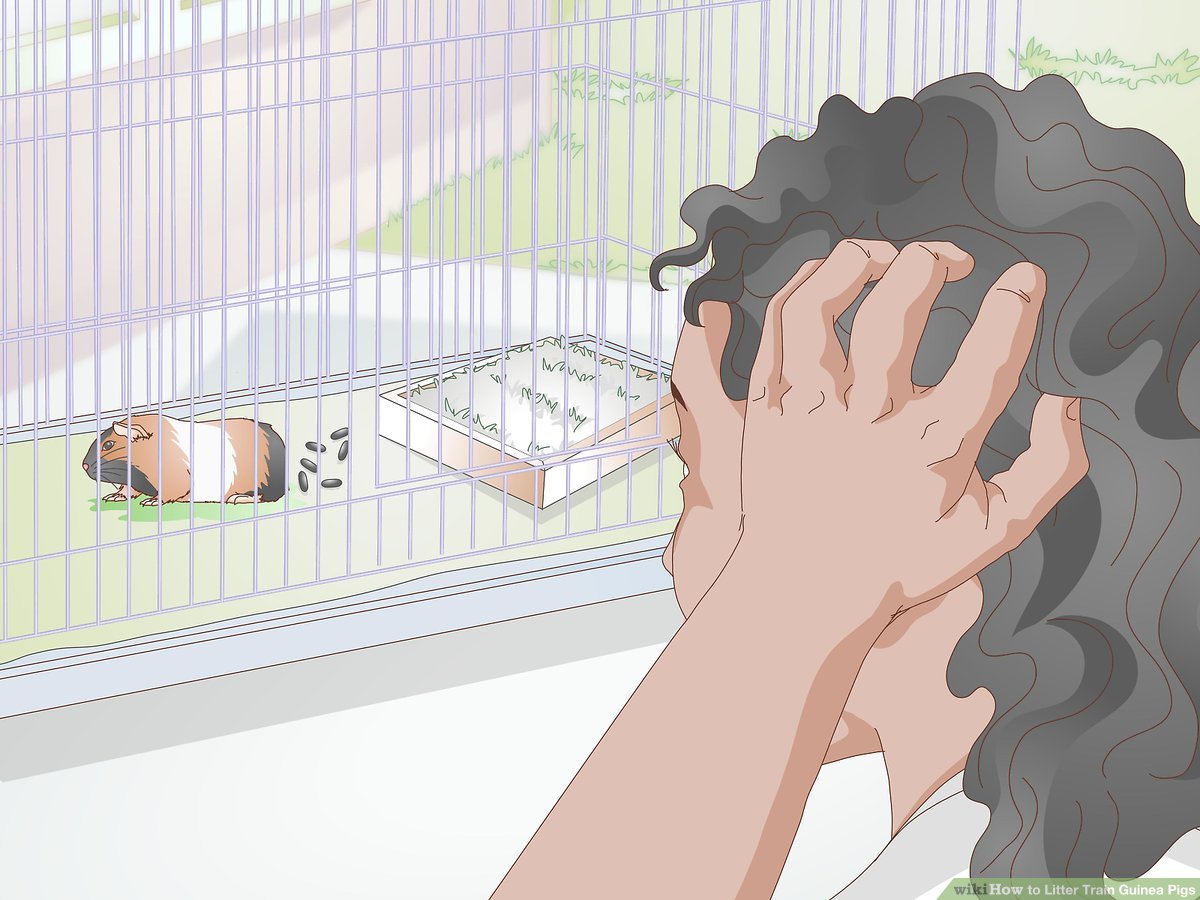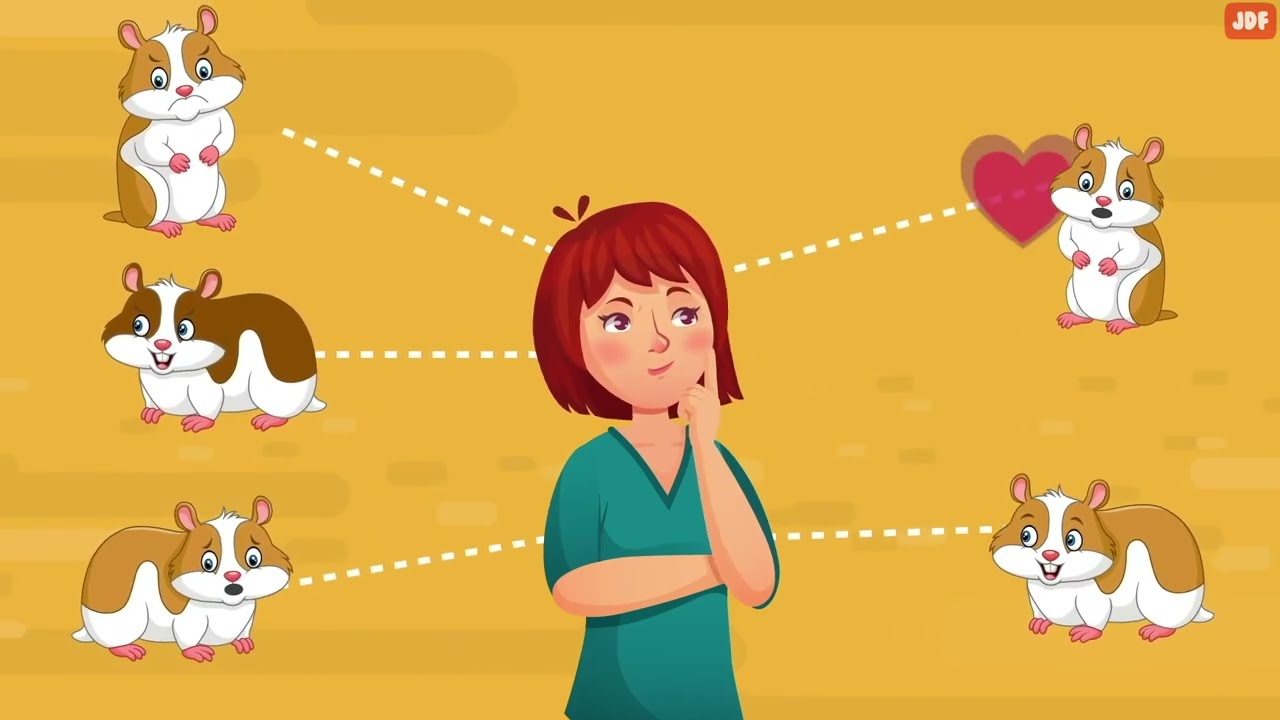Guinea pigs, those adorable little rodents, bring joy to many homes. However, their messy habits can sometimes be a challenge, particularly when it comes to potty training. Fear not, fellow guinea pig parent! With patience, persistence, and the right techniques, you can guide your furry friend towards a clean and odor-free environment.
>> READ MORE:
- Can Guinea Pigs Eat Oranges? A Comprehensive Guide to Citrus and Cavies
- Can Guinea Pigs Eat Broccoli? A Comprehensive Guide to This Popular Veggie
- Guinea Pig Vision A Comprehensive Overview
- Can a Bath Kill a Guinea Pig Understanding the Risks
Contents
- 1 Understanding Guinea Pig Toilet Habits
- 2 The Importance of Potty Training
- 3 Choosing the Right Litter Box and Bedding
- 4 Introducing Your Guinea Pig to the Litter Box
- 5 Establishing a Regular Cleaning Schedule
- 6 Positive Reinforcement and Treats
- 7 Common Potty Training Mistakes to Avoid
- 8 Patience and Persistence: A Key to Success
- 9 Conclusion
Understanding Guinea Pig Toilet Habits

Before we dive into the training process, it’s crucial to grasp the basics of guinea pig urination and defecation. Unlike cats or dogs, guinea pigs naturally defecate frequently, up to 200 times a day! They also tend to urinate in specific areas, often in corners or near their food and water bowls. Understanding these habits is essential in successfully potty training your guinea pig.
One interesting fact about guinea pig urine is that it contains high levels of ammonia, which can be harmful to both you and your pet if not properly managed. This is why it’s essential to establish a regular cleaning schedule for their litter box and cage. Moreover, some guinea pigs may choose to mark their territory by urinating around their living space, so keep an eye out for any unusual behavior and address it promptly.
The Importance of Potty Training

Potty training your guinea pig offers numerous benefits, including:
Cleanliness
A trained guinea pig means a cleaner cage and home, reducing the risk of unpleasant odors and potential health problems. By teaching your pet to use a designated litter box, you can easily remove any soiled bedding and maintain a hygienic environment for both you and your furry friend.
Health
By eliminating ammonia and other harmful substances from their environment, potty training can help prevent respiratory issues and other health complications. Guinea pigs have sensitive respiratory systems, and exposure to ammonia can lead to severe health problems. Thus, potty training is crucial in keeping them healthy and happy.
Bonding
The training process can strengthen the bond between you and your guinea pig, as it encourages positive interaction and rewards. This is especially true if you adopted a shy or fearful guinea pig, as regular interaction during potty training can help build trust and confidence.
Reduced Stress
A clean and organized cage can create a less stressful environment for your furry friend. Guinea pigs are generally clean animals, and being forced to live in an unclean space can cause distress and discomfort. By potty training them, you are providing them with a comfortable and safe living space, promoting their overall well-being.
Choosing the Right Litter Box and Bedding

When it comes to potty training your guinea pig, choosing the right litter box and bedding is crucial. The wrong choice can hinder the training process, and even cause health issues for your pet. Here are some factors to consider when selecting a litter box and bedding:
Size Matters
First and foremost, the size of the litter box is essential. It should be large enough for your guinea pig to comfortably move around and contain all of its waste. A good rule of thumb is to choose a litter box that is at least twice the length of your guinea pig.
Material
The material of the litter box is also important. Avoid plastic litter boxes, as they can absorb odors and become difficult to clean over time. Instead, opt for a ceramic or metal litter box, as they are more durable and odor-resistant.
Absorbent Bedding
Choosing the right bedding is equally important as it absorbs urine and keeps the litter box clean. Avoid using wood shavings, as they can cause respiratory issues and skin irritations for your guinea pig. Instead, opt for paper-based bedding or fleece liners, which are safe and absorbent choices.
Introducing Your Guinea Pig to the Litter Box

Now that you have chosen the right litter box and bedding, it’s time to introduce your guinea pig to its new potty area. Here are some steps to follow for a smooth transition:
Placement is Key
The location of the litter box plays a significant role in whether or not your guinea pig will use it. Place the litter box in a quiet and easily accessible area, away from their food and water bowls. Guinea pigs prefer to urinate and defecate in corners, so choose a corner of their cage and place the litter box there.
The Power of Observation
Guinea pigs are intelligent animals and are quick learners. Start by observing your pet’s toileting habits and patterns. Once you have identified where they tend to urinate or defecate, place the litter box in that area. This will increase their chances of using the litter box.
Utilize Their Natural Instincts
Guinea pigs are naturally clean animals and tend to avoid soiling their living spaces. Take advantage of this natural instinct by placing some of their soiled bedding into the litter box. The familiar smell will encourage your guinea pig to use the litter box.
Be Patient
Potty training can take time, so be patient with your furry friend. Some guinea pigs may take to their litter box immediately, while others may need more time to adjust. Don’t get discouraged if your pet doesn’t start using the litter box right away. It’s all part of the learning process.
Establishing a Regular Cleaning Schedule

Now that your guinea pig is using its litter box, it’s essential to establish a regular cleaning schedule to maintain cleanliness and promote good hygiene for your pet. Here are some tips to keep in mind:
Daily Spot Cleaning
It’s crucial to remove any soiled bedding and waste from the litter box daily. This will help keep the litter box clean and odor-free. Use a small scoop or dustpan to remove any solid waste and replace the soiled bedding with fresh ones.
Deep Cleaning
Once a week, it’s essential to do a deep cleaning of the litter box and the entire cage. Remove all the bedding, wash the litter box with mild soap and warm water, and dry it thoroughly before adding fresh bedding. This will reduce the build-up of bacteria and eliminate any odors.
Keep a Spare Litter Box
Having a spare litter box can be helpful when doing your weekly deep cleaning. You can place the spare litter box in your guinea pig’s cage while you clean the other one. This will ensure that your pet has a clean space to use while its primary litter box is being cleaned.
Positive Reinforcement and Treats
As mentioned earlier, potty training offers an excellent opportunity for bonding with your guinea pig. Positive reinforcement and treats are an effective way to encourage good behavior and strengthen the bond between you and your furry friend. Here are some tips on how to incorporate positive reinforcement into the training process:
Rewards
Rewarding your guinea pig with treats every time they successfully use the litter box is an excellent way to reinforce good behavior. Choose small, healthy treats such as carrots, bell peppers, or guinea pig pellets. Give them treats immediately after they have used the litter box, so they associate it with a positive experience.
Verbal Praise
Along with treats, verbal praise can go a long way in encouraging your guinea pig. Every time your pet successfully uses the litter box, give them praise and affection. This helps them understand that they have done something right and reinforces the desired behavior.
Consistency
To effectively train your guinea pig, consistency is key. Stick to the same routine and methods throughout the training process. This will help your pet understand what is expected of them and make the training process more efficient.
Common Potty Training Mistakes to Avoid
As with any training, there are some common mistakes that guinea pig owners make that can hinder the potty training process. Here are some mistakes to avoid:
Punishing Your Pet
Punishing your guinea pig for not using the litter box can have a negative impact on their behavior and can damage the bond between you and your pet. It’s essential to remember that accidents happen, and your furry friend may need some time to adjust to the new routine.
Using the Wrong Type of Litter
Using the wrong type of litter can cause health issues for your guinea pig and can even discourage them from using the litter box. Avoid using scented or clumping cat litter, as they can be harmful if ingested by your pet.
Inconsistency
As mentioned earlier, consistency is crucial in potty training your guinea pig. Changing up the routine or methods can confuse your pet and make it more challenging to train them. Stick to the same routine and methods to ensure the best results.
Patience and Persistence: A Key to Success
Potty training a guinea pig requires patience and persistence. Every guinea pig is unique, and some may take longer to learn than others. Be patient with your pet and continue the training process, and eventually, they will learn to use the litter box consistently.
Don’t get discouraged if your guinea pig has an accident, and don’t give up. With time and patience, your furry friend will learn to use the litter box, making life easier for both you and your pet.
Conclusion
Potty training your guinea pig may seem like a daunting task, but with the right techniques and tools, it can be a smooth and rewarding experience. Remember to choose the right litter box and bedding, be patient and consistent, and incorporate positive reinforcement into the training process.
By potty training your guinea pig, you are promoting good hygiene, preventing health issues, and strengthening the bond between you and your furry friend. With time and patience, your guinea pig will be using its litter box like a pro, bringing joy and cleanliness to your home.
